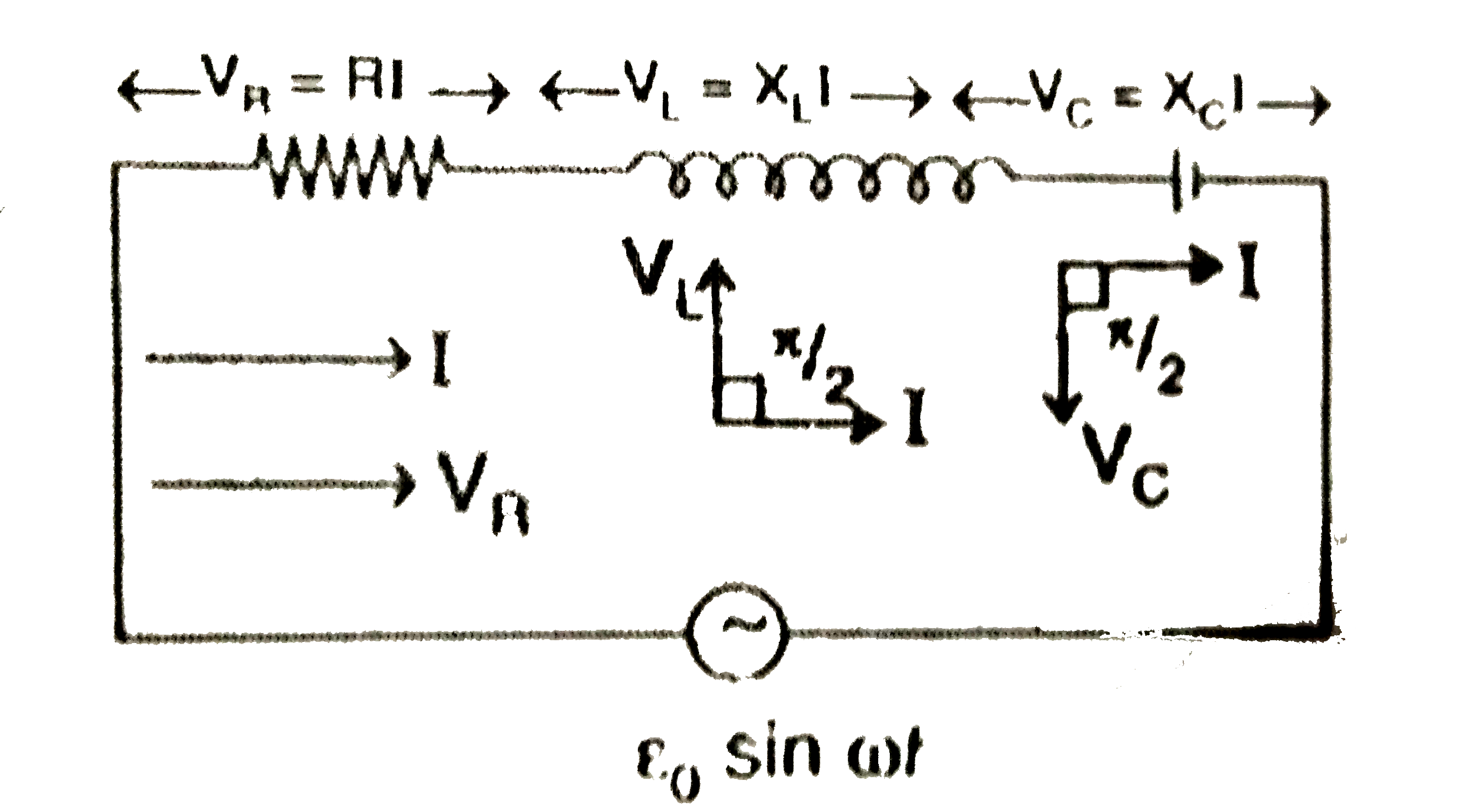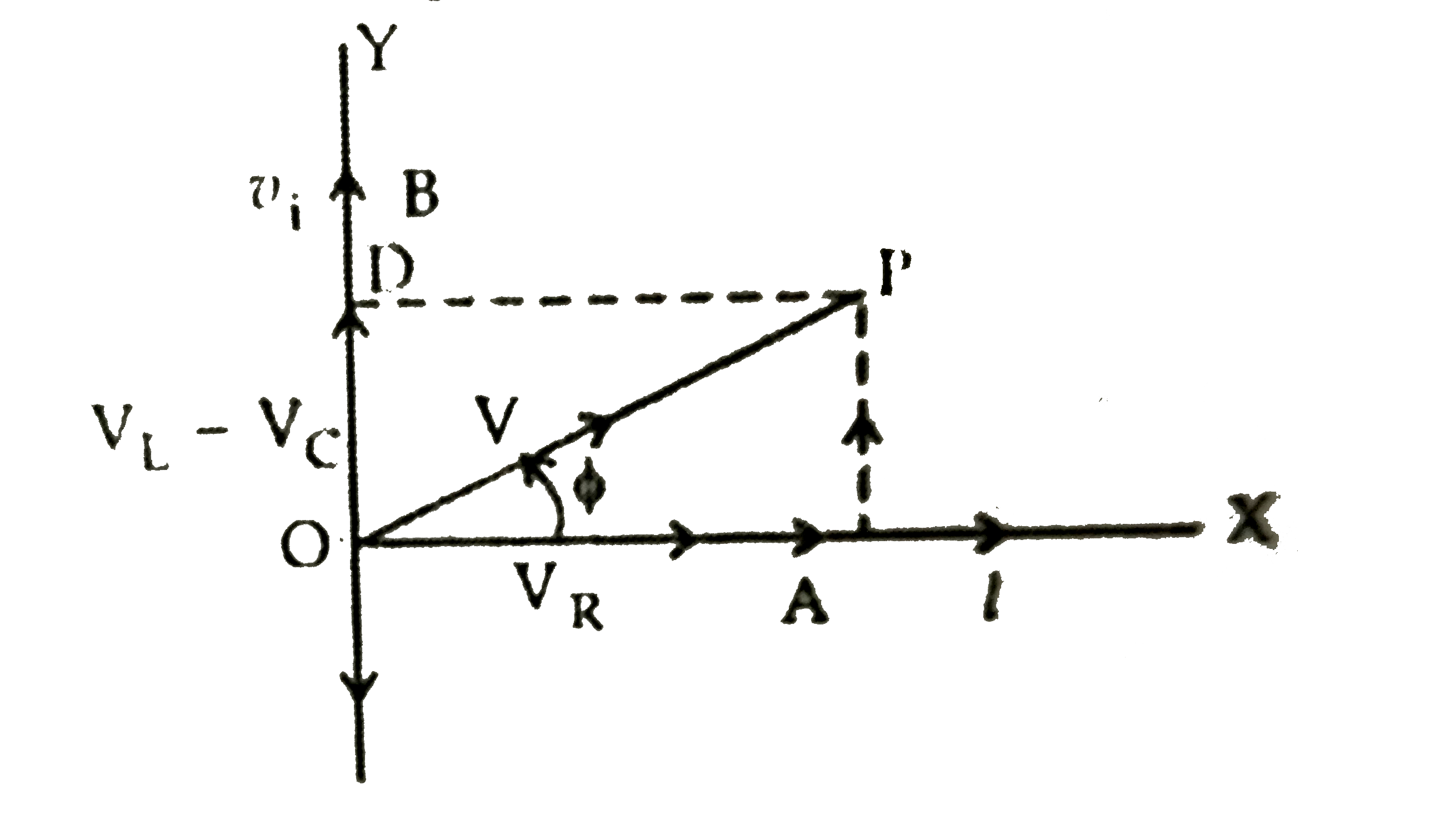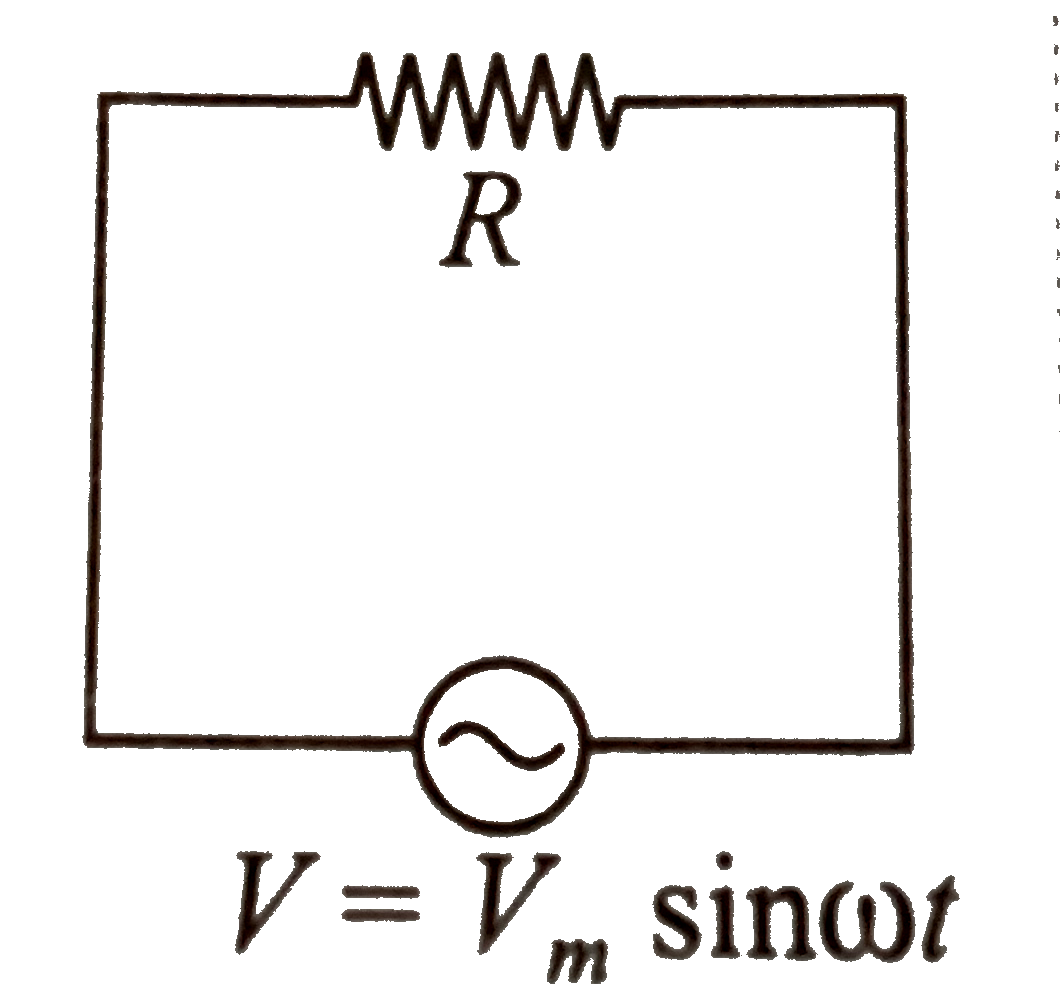A series LCR circuit is connected to an ac source having voltage v=vmsinωt. Derive the expression for the instantaneous current I and its phase relationship to the applied voltage.
(i) Maximum and (ii) minimum.
(a) (1) Equivalent impendance (Z) is LCR circuit: The effective resistance offered by a series LCR-circuit is called its impedance. It is denoted by Z.
Suppose an inductance L, capacitance C and resistance R are connected in series to a source of alternating emf, V=V0 sin wt.
Let, I be the instantaneous value of current in the series circuit.
Then voltages across the three components are
(i) VL=XLI It is ahead of current I in phase by 90∘.
(ii) VC=VCI. it lags behind the current I in phase by 90∘.
(iii) VR=RI. It is in phase with current I.

These voltages are shown in the phasor diagram given below :

As VLandLC are in opposite directions, their resultant is OD=VL−VC, in the positive y-direction By paralllelogram law, the resultant voltage is V=OP
=√OA2+OD2=√V2R+(VL−VC)2
=√R2I2+(XLI−XCI)2=I√R2+(XL−XC)2
∴VI=√R2+(XL−XC)2.
Clear, V/I is the effective resistance of the series LCR circuit and is called its impedance (Z).
∴Z=√R2+(XL−XC)2=√R2+(ΩL−1ΩC)2[∵XL=ΩLXC=1/ΩC]
(2) When Z=R, then X1=XC
∴ΩL=1ΩC⇒Ω2LC=1⇒Ω=1√LC
(3) , From phasor diagram, it follows that in LCR series circuit, V leads I (XL>LC) by phase angle ϕ then
tanϕ=APOA=VL−VCVR
tanϕ=IXL−IXCIR⇒tanϕ=XL−XCR
tanϕ=Reactive ImpedanceResistance
∴ϕ=tan−1[Reactive Impedance Resistance]
∵ Impedance Z=√R2+(XL−XC)2
For resonance, XL=XC∴Z=√R2⇒Z=R
Hence, for the condition of resonance, impedance is equal to resistance.
Power factor : Power factor is defined as the ratio of true power to apparent power. it is denoted by cosϕ.
∴Power factorcosϕ=R√R2+(XL−XC)2
(i) Power factor is maximum when the circuit contains only R.
(ii) Power factor is minimum for purely inductive or capacitive circuit.
Related Playlists
- BOOK - XII BOARDS PREVIOUS YEARCHAPTER - XII BOARDSEXERCISE - SET-II35videos
XII BOARDS
- BOOK - XII BOARDS PREVIOUS YEARCHAPTER - XII BOARDSEXERCISE - SET-III25videos
XII BOARDS
- BOOK - XII BOARDS PREVIOUS YEARCHAPTER - XII BOARDSEXERCISE - SET III9videos
XII BOARDS
- BOOK - XII BOARDS PREVIOUS YEARCHAPTER - SAMPLE PAPER 2019EXERCISE - SECTION D6videos
SAMPLE PAPER 2019
Similar Questions
A series LCR circuit is connected to an a.c. source having voltage V=Vmsinωt
Derive the expression for the instantaneous current I and its phase relationship to the applied voltage. Obtain the condition for resonance to occur. Define 'power factor'. State the conditions under which it is (i) maximum, (ii) minimum.View SolutionA series LCR circuit is connected to a source having voltage v=vmsinωt.Derive the expression for the instantaneous current I and its phase relationship to the applied voltage.
Obtain the condition for resonance to occur.Define 'power factor'.State the conditions under which it is (i)maximum and (ii)minimum.View SolutionDraw the phasor diagram of a series LCR connected across an ac source V=V0sinωt. Hence derive the expression for the impedance of the circuit . Obtain the conditions for the phase angle under which the current is (i) maximum and (ii) minimum.
View SolutionA series LR circuit is connected to a voltage source with V(t) = V0 sin ω t. after very large time, current I(t) behaves as (t0>>LR)
View SolutionAn ac source of voltage V=Vmsinωt is connected across the resistance R as shown in figure. The phase relation between current and voltage for this circuit is
 View Solution
View SolutionAn ac source of voltage V=Vmsinωt is connected across the resistance R as shown in figure. The phase relation between current and voltage for this circuit is
 View Solution
View SolutionSeries LCR circuit is connected to an AC source of angular frequency ω. Current flowing in the circuit is found to lead the voltage by π/4. Magnitude of capacitance is
View SolutionAn L.C, R series circuit is connected to ac, source. At resonance, the applied voltage and the current flowing through the circuit will have a phase difference of
View SolutionDerive the expression for the average power disspated in a series LCR circuit for an ac source of a voltage, v=vmsinωt, carrying a current, i=imsin(ωt+ϕ).
Hence, define the term ''Wattless current''. State under what condition it can be realized in a circuit.View SolutionAn LCR circuit is connected to a source of alternating current. At resonance, the applied voltage and the current flowing through the circuit will have a phase difference of
View Solution

